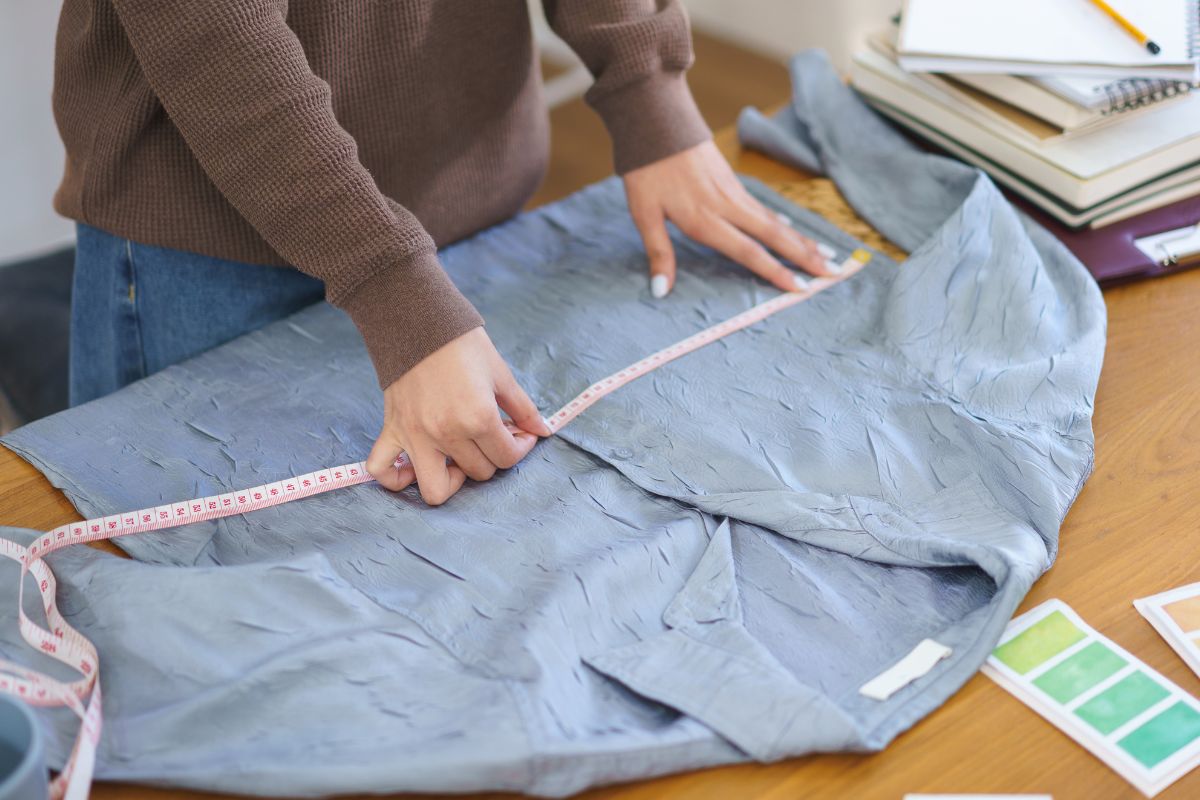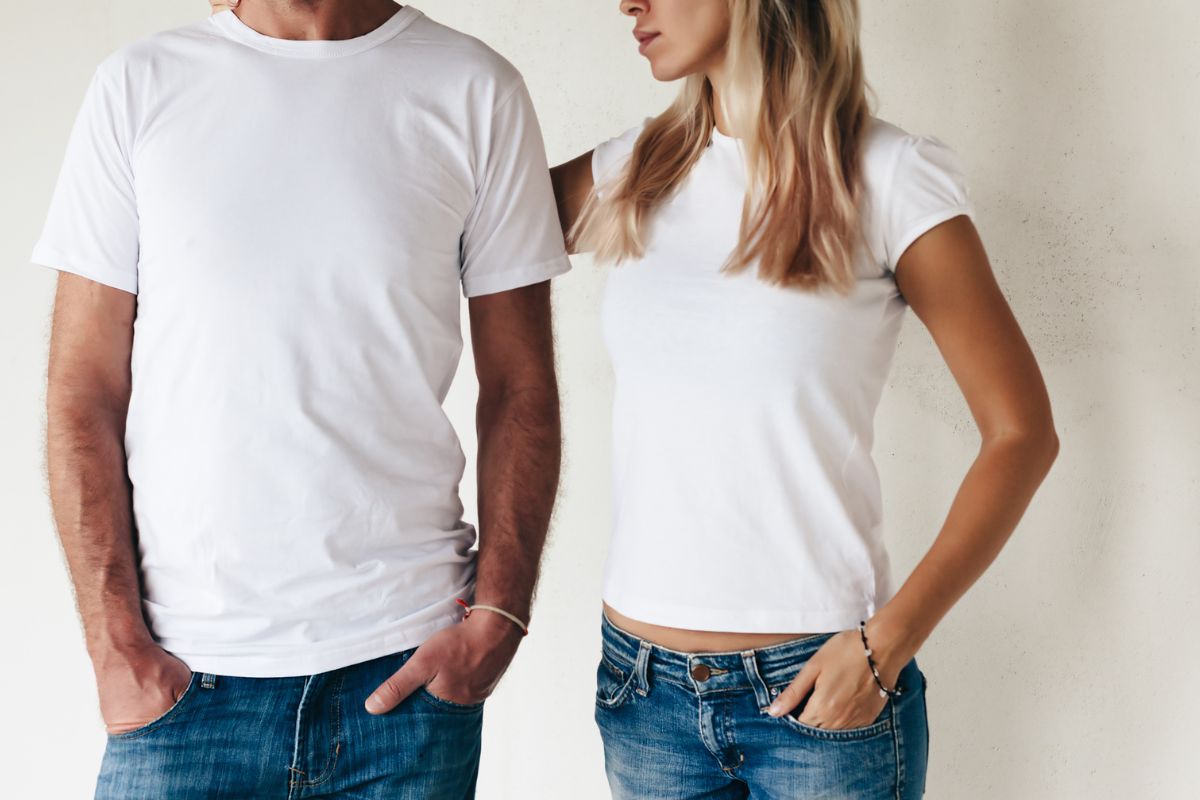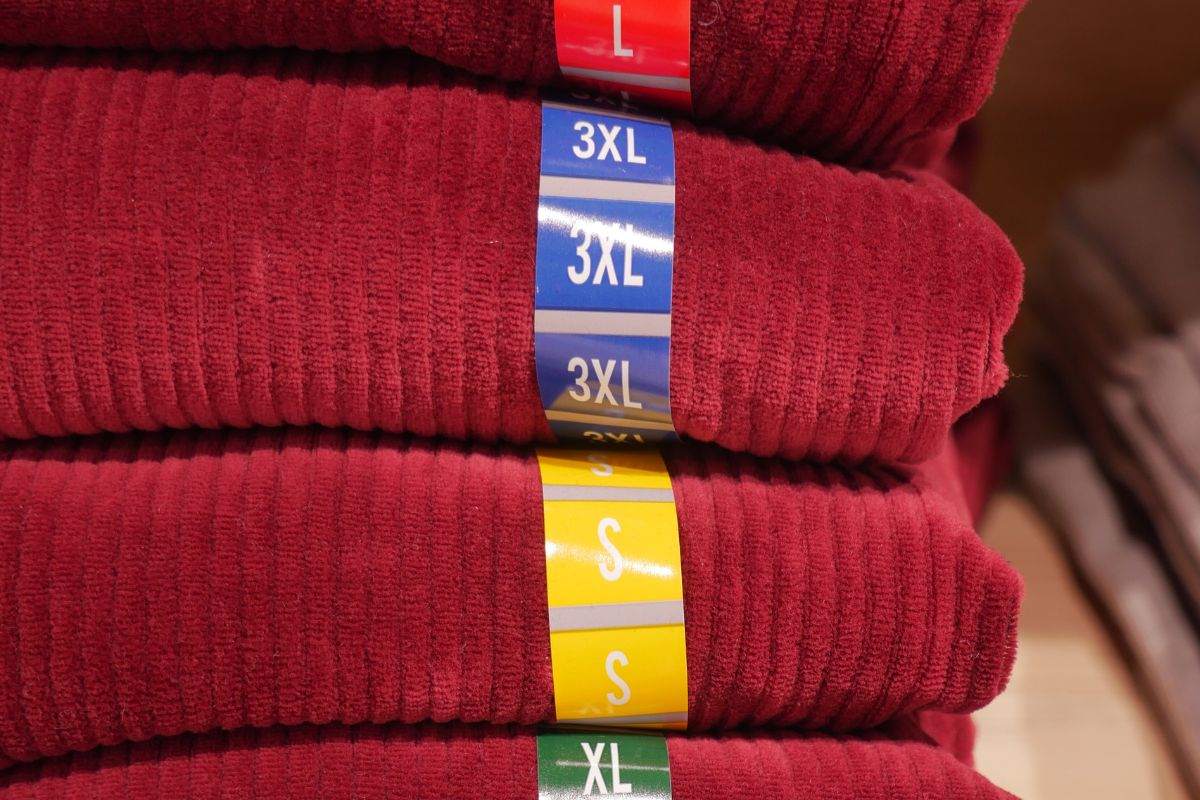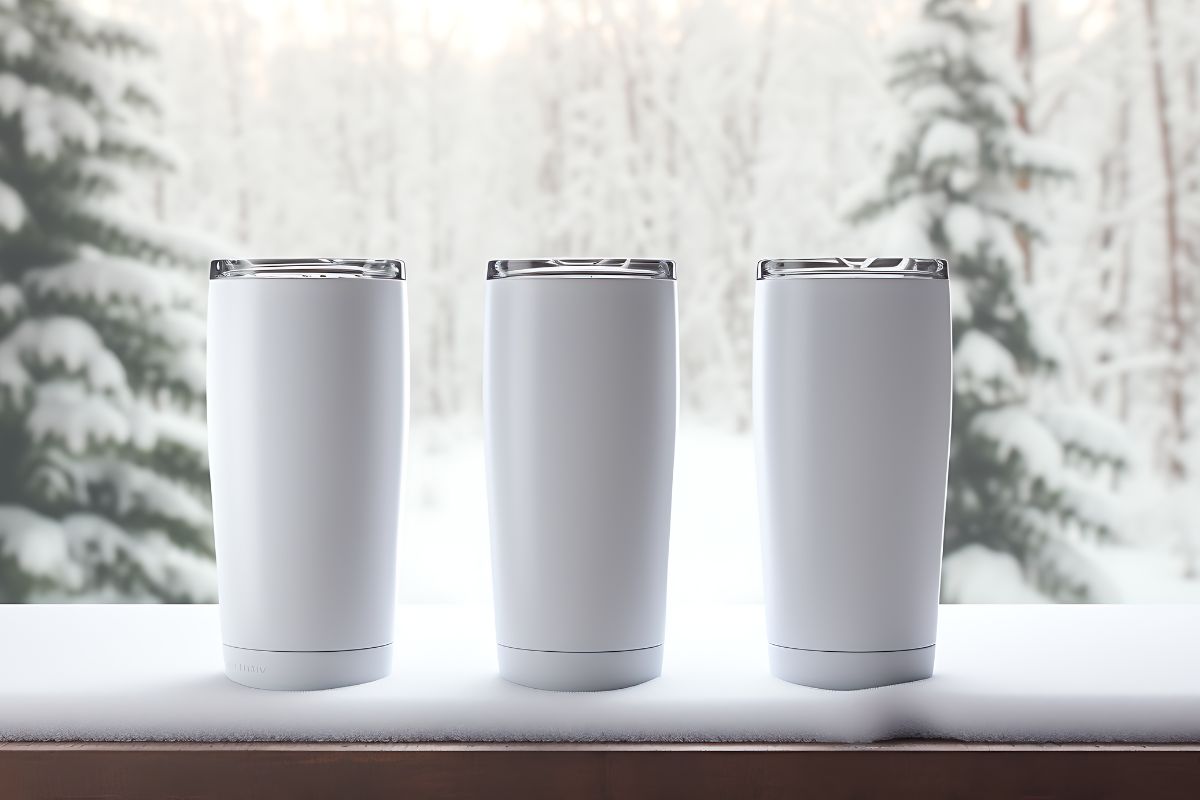Finding a perfectly fitting shirt can be a surprising challenge. I’ve learned that a shirt that fits well can make a significant difference in appearance and comfort. Whether I’m shopping for casual tees, office wear, or formal dress shirts, knowing my exact size is essential to ensure the best fit. With the advent of online shopping, guessing and trying on multiple sizes is less practical. This is where shirt size calculators come in handy, simplifying the process of finding my shirt size without the guesswork.
Shirt size calculators are particularly useful because they consider various body measurements, not just the chest circumference or collar size that I might be familiar with. For instance, they can account for my chest, shoulder width, sleeve length, and even factor in height and weight to suggest the ideal size for my build. Online calculators are designed to guide me through measuring myself accurately and then compare these measurements with sizing charts from different brands, which often vary. This ensures that I select the size that will give me the best fit, tailored to my unique body dimensions.
Understanding Shirt Sizes
When choosing a shirt, it’s crucial to understand the nuances of shirt sizes, which are influenced by clothing terminology and gender-specific sizing. This helps ensure a comfortable and flattering fit.
Clothing Terminology
Shirt size denotes the label given to a garment to describe its dimensions. Commonly, these sizes range from small (S) to extra-large (XL) and are sometimes extended to include sizes like 2XL or 5XL for a broader range of body types. These sizes consider various body measurements, typically the chest, waist, and length of the shirt.
Beyond the alphabetical sizes, numeric sizes might also be used, which correspond to specific body measurements in inches or centimeters. For instance, a men’s shirt labeled “15/33” means a neck size of 15 inches and a sleeve length of 33 inches. It’s important for me to know my exact measurements to select a shirt that fits well.
Gender-Specific Sizing
Men’s and women’s shirts are sized with different approaches due to the distinct body shapes and proportions typically attributed to each gender.
Men’s sizes often focus on neck size and sleeve length, as these are critical for a proper fit, especially in formal or business wear. An ideal men’s shirt fits comfortably around the neck and has sleeves that end just past the wrist bone.
On the other hand, women’s sizes tend to take a more detailed approach, considering bust, waist, and hip measurements. This is reflective of the typically greater variation in body shapes among women. Women’s shirts also come in numerical sizes, which tend to vary more between manufacturers compared to men’s sizing.
Remember, these sizes are only a starting point; personal preference and specific brand sizing charts should always be considered for the best fit.
Measuring for Shirt Size

Before trying to determine my shirt size with a calculator, I ensure I have accurate measurements of my chest, waist, length, and shoulder width. Taking these measurements allows me to use a size calculator effectively, ensuring a well-fitting shirt.
Chest Measurement
To measure my chest, I wrap a tape measure around the fullest part, usually just under the armpits and across the shoulder blades. I keep the tape measure parallel to the floor for consistency and ensure it’s snug but not tight. The number I get is my chest measurement.
Waist Measurement
For my waist measurement, I find the narrowest part of my waist, typically just above the belly button. I measure in a similar manner to the chest, ensuring the tape measure is parallel to the ground and comfortable without being too loose or tight.
Length Measurement
Shirt length is important for a proper fit, and I measure it from the highest point of the shoulder, close to the neck, straight down to the point where I want my shirt to end. I usually ensure the measure stops at my hip or slightly below, depending on the intended shirt style.
Shoulder Width Measurement
The shoulder width is key for a good fit. I measure it from one shoulder point to the other, across the back. This measurement tells me whether I’ll have the range of motion I need in a shirt without pulling or gaping.
Size Charts and Calculators
When selecting a shirt, it’s essential to find the right fit for comfort and style. My discussion here will focus on using size charts, the benefits of shirt size calculators, and understanding international sizing variations.
Using a Size Chart
I find that utilizing a size chart is a traditional and effective method to determine my shirt size. Each brand typically has its own chart, which corresponds to various body measurements such as chest, waist, and sleeve length. To use a sizing chart:
- Measure my body: I take accurate measurements of my chest, waist, and arm length.
- Consult the chart: I match my measurements to the chart to find the corresponding size.
Sample Size Chart:
| Size | Chest (in) | Waist (in) | Sleeve (in) |
| S | 34-36 | 28-30 | 32-33 |
| M | 38-40 | 32-34 | 33-34 |
| L | 42-44 | 36-38 | 34-35 |
| XL | 46-48 | 40-42 | 35-36 |
Shirt Size Calculators
Shirt size calculators simplify the process of finding my size by automating it. By inputting my height and weight into the calculator, it provides me with a recommended size. Here’s why I believe in their effectiveness:
- Convenience: It saves me the trouble of manually measuring myself.
- Accuracy: It bases the recommendation on large datasets to predict the best fit.
International Sizing Charts
Since shirt sizes can vary significantly across countries, an international shirt size chart is a valuable tool for me when I shop for brands outside my region. It aligns various country’s size metrics into a coherent system that I can easily interpret. When I look at an international sizing chart, I pay attention to:
- Conversion accuracy: I ensure the conversion accurately reflects sizes across different countries.
- Region-specific details: I consider unique sizing for the US, UK, EU, and Asian markets.
International Conversion Table:
| US/Canada | UK | Europe | Asia |
| S | 36 | 46 | 1 |
| M | 38 | 48 | 2 |
| L | 40 | 50 | 3 |
| XL | 42 | 52 | 4 |
Factors Influencing Shirt Size

When selecting a shirt, the key factors to consider are body composition, height and weight, and personal preferences. These elements help determine the most flattering and comfortable fit.
Body Composition
Body composition plays a crucial role in shirt sizing. Muscle mass, chest size, and body fat distribution can all impact the fit of a shirt. For example, individuals with a muscular build may require a larger size to accommodate broader shoulders or a wider chest.
- Muscle Mass: Affects the fit around the shoulders and chest; may need a larger size.
- Body Fat: Distribution of body fat can alter how a shirt drapes or fits, especially around the midsection.
Height and Weight Considerations
Height and weight are commonly used to provide a preliminary shirt size estimate. They serve as a starting point, with most calculators offering a range from Small (S) to 5XL based on these measurements.
- Height: Taller individuals may need a shirt with longer sleeves and torso length.
- Weight: Generally correlates with shirt size, although it is not a definitive measurement on its own due to varying body shapes.
Personal Preferences
Personal preferences significantly influence shirt size choices. One’s desired fit—whether it’s a tight, loose, or tailored look—will determine the preferred sizing.
- Fit Preference: Some may favor a snug fit, while others might opt for a more relaxed style.
- Comfort Levels: Comfort is subjective, making it essential to consider how the shirt feels when worn.
Choosing The Right Fit
When I select a shirt, my priority is a harmonious balance between style, comfort, and the shirt’s appearance on my body. This ensures the chosen shirt complements my physique and suits my personal preferences.
Style and Cut
I consider the style and cut of a shirt as they define its overall look and how it conforms to my body shape. I opt for slim fit for a more tailored appearance, a classic cut for ample room, or a relaxed fit for casual ease. Here’s a breakdown of how each style typically fits:
- Slim Fit: Narrow around the chest and waist.
- Classic Fit: Generous room around the body for ease of movement.
- Relaxed Fit: Looser for maximum comfort and a laid-back feel.
Comfort and Appearance
Comfort is paramount for me in a shirt, as it directly affects my appearance and confidence. To achieve this, I ensure the fabric is pleasant against my skin and that the shirt allows a full range of motion. Additionally, the right fit should look natural and flattering:
- Fabric: Breathable materials like cotton for comfort.
- Range of Motion: Enough room in the shoulders and arms.
- Appearance: I look for a fit that avoids both bunching and pulling.
Customizing Your Fit
I like to customize my shirt fit with precise measurements to attain that perfect fit. I find that referencing a shirt size calculator informs me about the size that suits my height and weight, but I go further by measuring my neck, chest, and sleeve length. For the best results, I use the following measurement guidelines:
- Neck: Measure around the base where the shirt collar sits.
- Chest: Measure around the fullest part of my chest.
- Sleeve Length: Measure from the middle of my neck to the edge of my shoulder and down to my wrist.
Using a combination of these measurements and a size chart, I can pinpoint the size that will provide the fit I’m looking for—neither too tight nor too loose.
Shopping for Shirts

When I shop for shirts, whether it’s online or in-store, I’ve found that it’s crucial to understand how sizing works and what different brands offer. My shopping experience has taught me to pay close attention to detail and rely on reputable brands for consistent sizing.
Online Shopping Tips
When shopping online, I make sure to use a shirt size calculator before adding items to my cart. It’s a simple tool where I enter my height, weight, and other measurements to find the perfect fit. I always double-check the sizing chart provided by the website as different brands may have varying standards. Here’s a basic checklist I follow while online shopping:
- Confirm my current measurements
- Reference the brand’s sizing chart
- Check for flexible return policies
Reading Product Descriptions
The product descriptions on a website are gold mines of information. Here, I find details on shirt materials, fit type (slim, regular, or loose), and washing instructions. If there’s a model wearing the shirt, I look for their measurements and the size they’re wearing as a reference point. Key things I pay attention to:
- Material Composition (e.g., 100% cotton, polyester blend)
- Fit and Sizing Details (e.g., “Fits true to size”)
- Model’s Measurements and Worn Size
Trusted Clothing Brands
I’ve learned to rely on certain trusted clothing brands due to their consistent quality and sizing. Brands like Tapered Menswear offer tools like their shirt size calculator, which are tailored to their specific product dimensions. Establishing a go-to list of brands makes my shopping process much smoother as I can trust their sizes will fit me well. A few of my preferences include:
- Tapered Menswear: Their precise sizing tools are very helpful.
- Levi’s: Known for consistent sizing across various apparel.
- H&M: Offers a variety of fits for different body types.
By sticking to recognized brands, I minimize the guesswork and the hassle of potential returns.
Different Types of Shirts

When discussing shirt size calculators, it’s crucial to consider the variety of shirts available. Each type fits differently and serves different purposes, making understanding the nuances of their designs essential.
T-Shirts and Casual Wear
I pay special attention to T-shirts and casual wear as they represent the cornerstone of everyday fashion for many people. These garments prioritize comfort and ease of movement. Casual shirts, including tees, typically follow standard sizing from S to XL and beyond, but they can vary in cut, such as slim fit versus loose fit. Fabric weight is often noted in ounces and can affect the shirt’s drape and feel.
- Standard T-Shirt Sizes: S, M, L, XL, XXL
- Common Fabrics: Cotton, polyester blends
- Fit Type: Slim, regular, loose
Formal and Dress Shirts
My examination of formal and dress shirts reveals their complexity due to the inclusion of neck, chest, and sleeve measurements. These shirts exude professionalism and are essential for business or formal events. Sizing can be more specific because an accurate fit is critical for layering with suits and maintaining a polished silhouette.
- Measurements to Consider: Collar size (in inches), sleeve length (in inches)
- Key Features: Collar style (point, spread, button-down), cuff style (barrel, French)
- Common Materials: Cotton, linen, silk blends
Athletic and Performance Wear
Athletic and performance wear require my focused attention on functionality and fabric technology. Shirts in this category are designed to support physical activity, wicking away moisture and providing breathability. Sizing often incorporates stretch for a full range of motion, and the fit can range from compression to relaxed.
- Technology Highlights: Moisture-wicking, anti-odor, UPF protection
- Fit Options: Compression, fitted, loose
- Performance Fabrics: Polyester, spandex blends, mesh panels
In crafting shirts across these categories, manufacturers and fashion designers aim to cater to diverse body types and personal preferences while maintaining style and function. Whether one is looking for the casual ease of a tee, the sharpness of a dress shirt, or the technical benefits of athletic wear, understanding these variations helps in selecting the right size for comfort and appearance.
Maintaining Your Shirts
I understand the importance of a comfortable fit and ensuring my shirts last as long as possible. This means giving attention to fabric care, preventing shrinkage, and proper storage. Let’s look at how to maintain shirts to preserve their natural feel and longevity.
Fabric Care
For my shirts, I adhere to the instructions on the label, which often specify the ideal water temperature and recommended wash cycle. Natural fabrics like cotton can usually tolerate warm water, but I always check the tag. To prevent color bleeding, I separate my clothes by color, and I use a mild detergent for delicate materials.
Preventing Shrinkage
I avoid exposing my shirts to high heat in the dryer because it can cause shrinkage, especially with natural fibers. Instead, I opt for air drying on a flat surface or hanging them up. If I must use a dryer, I select the low heat or tumble dry option.
Longevity and Storage
I fold my garments neatly or hang them on suitable hangers to maintain their shape. Knit shirts fare best folded, while woven ones can be hung. I make sure my closet is well-ventilated to protect the fabric from any musty odors. Using garment bags for storage, especially for shirts I don’t wear often, helps keep them clean and dust-free.
Brand-Specific Sizing

When selecting the perfect shirt size, I find that understanding brand-specific sizing is essential. Each brand has unique sizing charts that are crucial for a proper fit.
Gildan Sizing Explained
For Gildan t-shirts, a Gildan size chart is your best reference. Gildan typically categorizes their sizes from small (S) to double extra-large (2XL). Here’s a basic breakdown:
- Small (S): Chest 34-36 inches, Waist 30-32 inches
- Medium (M): Chest 38-40 inches, Waist 32-33 inches
- Large (L): Chest 42-44 inches, Waist 34-36 inches
- Extra Large (XL): Chest 46-48 inches, Waist 38-40 inches
- Double Extra Large (2XL): Chest 50-52 inches, Waist 42-44 inches
I always suggest checking these measurements against your own when choosing a Gildan shirt for an accurate fit.
Nike and Other Major Brands
Nike, among other major brands, often has a more athletic cut to their garments. Utilizing their unique size charts can guide you to the right fit, as it’s not uncommon for sizes to differ from one brand to another. For Nike:
- Small (S): Chest 35-37.5 inches, Waist 29-32 inches
- Medium (M): Chest 37.5-41 inches, Waist 32-35 inches
- Large (L): Chest 41-44 inches, Waist 35-38 inches
- Extra Large (XL): Chest 44-48.5 inches, Waist 38-43 inches
- Double Extra Large (2XL): Chest 48.5-53.5 inches, Waist 43-47.5 inches
My experience tells me that the key is to always reference the specific brand’s sizing guide provided and to measure yourself before making a purchase. Different brands may vary in their dimensions, and for the best possible fit, trying on shirts in-store where possible is advisable.
Enhancing Confidence with Proper Fit

Wearing a shirt that fits me correctly is a subtle yet powerful confidence booster. It’s not just about looking good; the right fit ensures I am at my most comfortable, allowing for ease of movement and a flattering silhouette.
Why Proper Fit Matters:
- Style: A shirt that fits well complements my body type, enhancing my overall style.
- Comfort: Ill-fitting shirts, either too tight or too loose, can restrict movement and cause discomfort.
- Appearance: Properly fitting clothes give off a more tailored look and improve my presentation.
When I choose my shirt size, I focus on key measurements such as the chest, waist, and arm length. A shirt that fits well in these areas will naturally improve my appearance, making me feel more assured in my attire.
Tips for Finding the Right Fit:
- Measure my bust, waist, and arm length accurately.
- Consult the specific size charts provided by the manufacturer.
- If in doubt, I opt for a size that allows for slight alterations.
A well-fitting shirt serves as an armor of sorts, enhancing my posture and presence. It communicates that I take care of my appearance, which is often received as a sign of self-respect and attention to detail. This has a positive impact on how I am perceived both socially and professionally.
By choosing shirts that fit me well, I ensure that my comfort and confidence are never compromised, no matter the occasion.
Frequently Asked Questions
In this section, I’ll address common queries regarding how to use shirt size calculators effectively to find the right fit.
How do I determine my correct shirt size using my measurements?
To determine your correct shirt size, you’ll need your chest, neck, and sleeve length measurements. Use a tape measure to capture these accurately, then match them with a brand’s sizing chart to find your size.
What are the steps to calculate shirt size based on height and weight?
Calculating shirt size based on height and weight involves using an online tool that considers these measurements. Input your height and weight into the calculator, and it will suggest a size for you.
How can I find my shirt size without trying on different sizes?
You can find your shirt size without trying on different sizes by using a shirt size calculator online. Obtain measurements of your height and weight or your chest, waist, and possibly arm length for more detailed calculators.
What measurements are needed to calculate a woman’s shirt size?
To calculate a woman’s shirt size, bust, waist, and hip measurements are essential. Some calculators may also require height and weight.
How do I convert my chest measurement to the appropriate men’s shirt size?
To convert your chest measurement to the appropriate men’s shirt size, measure the circumference of your chest and compare it to a size chart, which will indicate the corresponding shirt size.
How does a 42-inch chest translate into shirt sizes?
A 42-inch chest typically translates into a large (L) size for most men’s shirts; however, check the specific brand’s sizing guide as there may be variations in their sizing standards.



